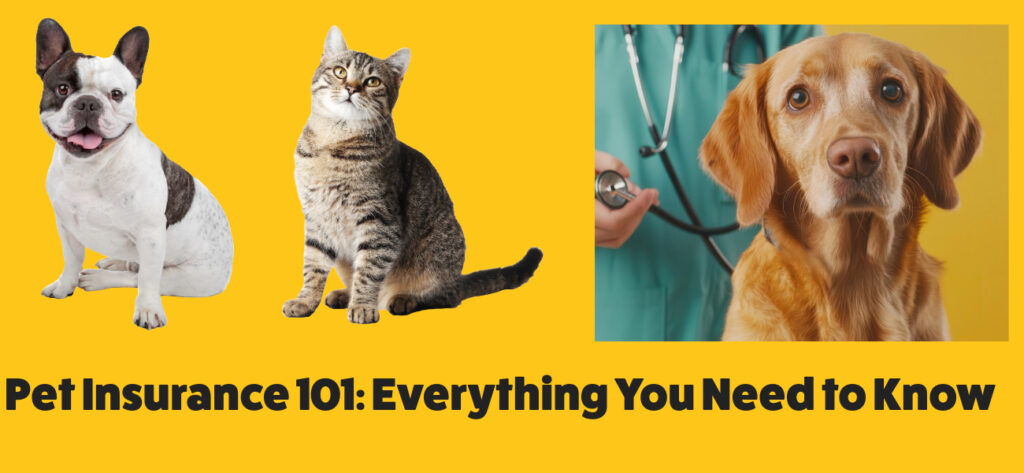Getting pet insurance is one of the best decisions you can ever make as a pet parent.
It ensures that you can afford the necessary medical care in case your beloved pet gets an emergency and helps safeguard its health at all times.
However, with so many providers and plans available, choosing the best one for your pet can be difficult.
So how do you navigate through this challenge?
Come with us as we guide you in choosing the best pet insurance for your budget.
Understanding Your Budget
Before choosing a pet insurance plan, it’s important to deeply understand your budget. Follow these steps to determine how much you’ll be comfortable committing to pet insurance.
- Assess your monthly budget for pet care expenses: Calculate the amount of money you spend monthly on your pet’s medical care. Look at how many vet visits you’ve had in a month and add together all the veterinary expenses from these visits to estimate the amount you are likely to spend on medical expenses per month.
- Consider unexpected veterinary costs: Emergencies can occur at any time. As such, it’s important to consider unexpected veterinary expenses that can arise, including surgeries, hospitalizations, and emergencies.
- Determine your financial comfort level for out-of-pocket expenses: Consider how much you’ll be comfortable paying out of your pocket for your vet’s medical expenses.
Key Factors to Consider
The following are some of the key factors to consider in choosing the right plan for your pet:
Coverage Options
Acquaint yourself with the allowable coverage options offered by the provider. These may include the following:
- Accident and illness coverage: This reimburses any veterinary expenses incurred on accidental physical injuries and illnesses or infections.
- Wellness plans: This usually comes as an add-on to other plans and covers routine care expenses such as deworming, vaccinations, blood tests, and other wellness exams.
- Hereditary and congenital conditions: The plan covers expenses incurred on hereditary and congenital conditions, such as allergies, dysplasia, eye issues, luxating patellar, and heart problems
- Behavioral issues: This covers expenses for behavioral treatments or therapy for behavioral concerns such as excessive barking, leash pulling, aggression, separation anxiety, etc.
Deductibles and Co-pays
It’s vital to consider the amount paid as deductibles and co-pays under every plan.
A deductible is the amount you are supposed to pay before the insurance starts covering costs, while a copay is the amount you are supposed to pay for your pet’s medical expenses after the deductible has been met.
The higher the deductible, the lower the premiums, and consequently, the larger the amount of veterinary expenses you will cover out of your pocket. If you choose a lower deductible, however, the higher the premiums, and the lower the expenses you will be covering out of your pocket.
Reimbursement Limits
Find out the maximum amount of veterinary expenses that will be covered per visit or yearly and determine if the reimbursement limits are in line with your expected veterinary costs.
Waiting Periods
Since most insurance policies don’t start coverage immediately, you need to find out the period you’ll need to wait before your expenses can be covered. This may range from a few weeks to several months. Understanding the waiting period will help you plan appropriately for any emergencies that may occur before the cover takes effect.
Exclusions
Pay attention to the exclusions and limitations applicable to different plans. Some exclusions include pre-existing conditions, routine care, and experimental treatments. Understanding this will help you determine if the exclusions align with your pet’s health needs.
Comparison Shopping Tips
Before settling for a provider, it’s important to research extensively and compare different providers to ensure you get the best. These are some tips you can use:
- Research reputable pet insurance companies: Browse the internet for different insurance companies and enquire from your friends, family, neighbors, and colleagues about the provider they use. You can also visit and ask relevant questions.
- Obtain quotes from multiple providers: Get quotations from various providers and choose the one that aligns best with your budget
- Compare coverage options, deductibles, co-pays, reimbursement limits, and exclusions. This will help you determine the one that suits your budget and your pet’s needs.
- Read reviews and testimonials from other pet owners: Browse the internet for customer experiences and reviews, or ask other pet owners who you know for their reviews.
Additional Considerations
Other important considerations that you should make when shopping for a pet insurance plan include:
Pet’s Age and Breed:
The age and breed of a pet play an important role in determining how much it will cost you in terms of premiums. The older the pet, the higher the premiums you are likely to pay because older pets are more prone to health issues than younger ones. Some breeds are also more prone to certain health issues than others, resulting in higher premiums.
Pet’s Health History
Consider your pet’s health history and future needs to ensure you get the best protection for it. If it has pre-existing conditions, check whether these are covered and how much you are to pay. Plan and discuss how to disclose the pre-existing conditions accurately.
Conclusion
Choosing the right insurance can be difficult given the various options available. Every pet owner desires to find an affordable policy that also provides adequate coverage.
It’s thus essential to consider important factors such as coverage options, deductibles, copays, exclusions, waiting periods, and reimbursement limits. Also, pay attention to your budget and the needs of your pet while choosing an insurance plan. Research on genuine insurance providers and compare their offers to find the best fit for your pet.


